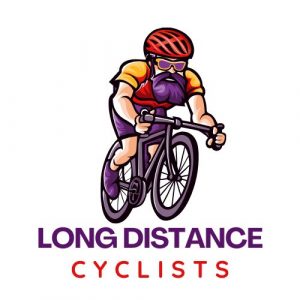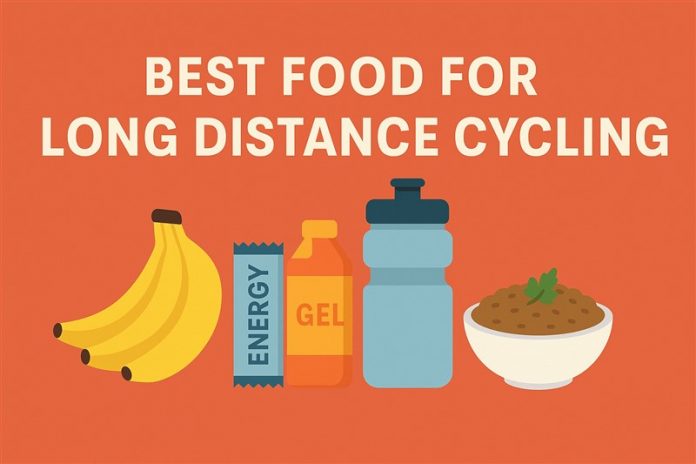Introduction
Nutrition is a cornerstone of long-distance cycling. Whether you’re riding a multi-day tour, a solo endurance route, or training for an audax or ultra-distance race, what you eat before, during, and after your ride has a direct impact on performance, stamina, and recovery. In this guide, we’ll explore the best foods for long-distance cycling, broken down into pre-ride meals, on-the-go snacks, hydration strategies, and post-ride recovery nutrition.
We’ll also provide a detailed table to help you plan your meals and snacks effectively, with a focus on real food and practical options for cyclists.
Why Nutrition Matters for Endurance Cycling
Long-distance rides demand sustained energy over hours—or even days. Your body needs a steady supply of carbohydrates, fats, and proteins to function optimally. Poor fueling can lead to fatigue, muscle cramps, or bonking (hitting the wall). With the right fuel, you’ll feel stronger, more focused, and able to ride longer with less discomfort.
Before the Ride: The Best Pre-Ride Foods
What to Eat Before a Long Ride
The goal of your pre-ride meal is to top up glycogen stores (your body’s fuel reserve). Ideally, you should eat 2–4 hours before your ride to allow digestion and avoid stomach upset.
Key Pre-Ride Nutrition Tips
- Focus on complex carbohydrates for slow-releasing energy
- Include a small amount of protein for muscle support
- Limit fats and fibre to prevent digestion issues
- Stay well hydrated leading up to the ride
Sample Pre-Ride Foods
- Oats with banana and honey
- Whole grain toast with peanut butter and jam
- Rice with eggs or tofu
- Smoothie with oats, fruit, and Greek yoghurt
- Pasta with a light tomato sauce
For early morning starts, a light meal 1–2 hours before riding—like a banana with a granola bar or a slice of toast—is a good option.
During the Ride: What to Eat on the Bike
Mid-Ride Fueling for Energy and Endurance
When cycling for more than 90 minutes, you’ll need to refuel regularly to keep energy levels steady. The body can typically absorb 60–90 grams of carbohydrates per hour, depending on intensity.
Key Tips for On-Ride Nutrition
- Eat small portions every 30–45 minutes
- Choose easily digestible carbs
- Combine quick sugars with longer-lasting carbs for balance
- Don’t forget electrolytes—especially on hot days
Best Mid-Ride Snacks
- Bananas (easy to digest, potassium-rich)
- Energy gels (quick sugar, compact format)
- Dates or dried fruit
- Granola or flapjack bars
- Rice cakes with jam or honey
- Trail mix (nuts, seeds, dried fruit)
- Mini sandwiches (white bread with jam or nut butter)
- Boiled potatoes with salt (a pro favourite!)
- Electrolyte drinks or tablets
- Carbohydrate drink mix
Experiment during training rides to see what your stomach tolerates best.
After the Ride: Nutrition for Recovery
Rebuilding and Refueling
The recovery window after a long ride is critical. Consuming the right nutrients in the first 30–60 minutes helps repair muscles, replenish glycogen, and reduce soreness.
Post-Ride Nutrition Goals
- Rehydrate with water and electrolytes
- Replenish carbs to restore energy stores
- Include protein to support muscle repair
- Add anti-inflammatory foods for recovery
Ideal Post-Ride Meals and Snacks
- Recovery smoothie (banana, berries, protein powder, almond milk)
- Chocolate milk (carb-protein combo, easy on the stomach)
- Tuna or chicken wrap with avocado
- Brown rice with tofu or grilled chicken and vegetables
- Greek yoghurt with honey and fruit
- Protein bar and a banana
Don’t forget to continue drinking water or an electrolyte beverage for several hours post-ride.
Best Foods for Long Distance Cycling – Quick Reference Table
| Timing | Food Suggestions | Purpose |
|---|---|---|
| Pre-Ride | Oats with banana, peanut butter toast, rice + egg, smoothie | Load up on slow-burning carbs, mild protein |
| 1–2 Hours Before | Banana + bar, toast with jam | Light fuel before an early morning ride |
| During Ride | Energy gels, bananas, flapjacks, trail mix, rice cakes | Maintain energy, avoid bonking |
| Every Hour | 60–90g of carbs: mix of solids and liquids | Sustain endurance and concentration |
| Post-Ride | Recovery smoothie, chocolate milk, rice bowl, wrap | Rebuild muscle, restore energy |
| Ongoing | Water, electrolyte tablets, carb drink mix | Maintain hydration, replace sodium loss |
Hydration: A Critical Part of Your Nutrition Plan
Don’t Let Dehydration Derail Your Ride
Hydration is just as important as food intake. Even a small drop in hydration can negatively affect performance. Make sure to sip fluids regularly and adjust your intake based on weather, sweat rate, and ride intensity.
Hydration Tips for Long Rides
- Start hydrated (pee should be pale yellow before the ride)
- Drink 500–750ml of water per hour depending on heat and effort
- Use electrolyte tablets or sports drinks on rides over 90 minutes
- Don’t rely only on thirst—drink proactively
- Rehydrate well after your ride with water and salty foods or drinks
What the Pros Eat: Real Food vs Packaged Options
Professional endurance cyclists often prefer a mix of real food and sport-specific products. Packaged options like gels, chews, and carb drink mixes are convenient and effective, but many cyclists perform just as well with whole foods like rice balls, sandwiches, and fruit.
If you’re on a long tour or multi-day adventure, real food becomes even more important—not just for performance but for mental wellbeing and digestive comfort.
Common Mistakes to Avoid
- Skipping breakfast or starting fasted
- Waiting too long to eat on the ride
- Only eating sugary snacks with no slow carbs
- Not practising your fueling strategy during training
- Ignoring hydration until you’re thirsty
Final Thoughts: Eat Smart, Ride Strong
Fueling long distance bike rides is a personal process, but the principles remain the same: consistent energy, easy-to-digest carbs, and proper hydration. Whether you prefer natural snacks or engineered performance nutrition, the key is to stay ahead of fatigue and support your body mile after mile.
By preparing your meals, snacks, and drinks in advance—and testing what works best—you’ll increase your performance, enjoy your rides more, and recover faster.
Your body is your engine. Feed it well, and it’ll take you anywhere you want to go.
What do you eat before, during and after a ride? Share your long distance cycling experiences in our comment section below and connect with other endurance riders worldwide.










